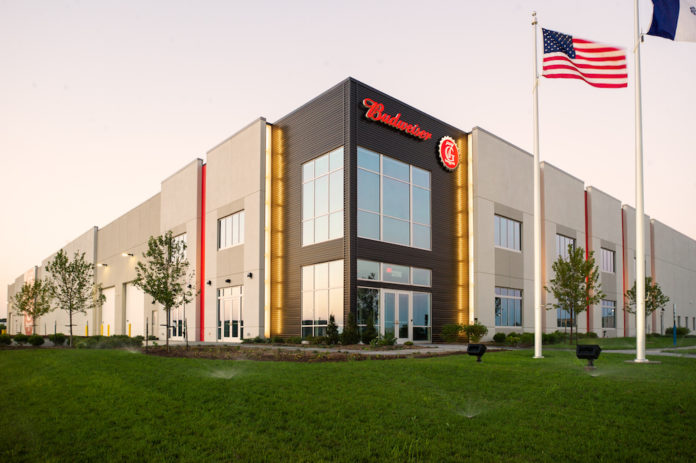With a seemingly unceasing rise in stock-keeping units, and increasing energy and environmental regulation, building a new wholesale warehouse or renovating or expanding existing space can be a challenging a project.
“When we’re planning a new facility, we try to do projections on sales volumes out maybe ten years” because of the way SKUs are “blowing up,” says Jack Holleran, president of architectural firm HDA.
The company specializes in beverage distribution facility design and functionality, having worked with over 150 beverage wholesalers on new facilities, expansions, renovations, material handling and operational needs.
Reliable sales volume projections can help a wholesaler avoid having to order up an addition to a building sooner than expected, Holleran notes.
To be more efficient with less space is the goal. Automation and warehouse management software is really important to achieving it, Holleran emphasizes. Being able to manage cases and SKUs in a way that decreases demands on the employees makes it “easier for them to pick and build loads — they don’t have to think a whole lot about it,” Holleran says. “And if somebody leaves, somebody else can step in pretty easily.”
Achieving that operational goal enables the warehouse and its workers to build loads for customers without errors in the picks, he notes. “You build loads that are manageable,” and stable “from the bottom up,” he adds, “so that you don’t have oddballs on the bottom and things falling over and breakage and those kinds of issues.”
Energy consumption and environmental impacts are increasingly important. “The wholesalers are concerned about energy consumption because it takes away from their bottom line, so they want to be in the most efficient space they can,” Holleran says. “They’ve all latched onto that, with LED lighting and even the HVAC design. It wasn’t that long ago we had chillers and evaporators. They cost a lot of money initially and they cost a lot of money to operate.”
The trend for a time now has been toward more simplified systems. “The brewers have changed their set points so they’re a little higher and the systems can be more efficient,” Holleran adds. Wholesalers commonly make use of an economizer cycle that brings in outside air to reduce operating costs.
The building envelope — its design and insulation — are critical to controlling energy consumption “so there isn’t a lot of heat transfer into the building or cold transfer,” Holleran says. “That all helps condition that space. Once they’ve started operations the building is set to a particular temperature set point and doesn’t have to run that hard because we’re not getting that through-wall transfer.”
Tilt-up construction is effective, and energy efficient. “It plays a big role,” Holleran says. “We use insulated panel systems. It’s not just a structural panel, it’s a sandwich panel that [contains] insulation.” Such panels can have an effective insulation of double or more their rating, Holleran says. “It’s a heck of an insulator for a conditioned space.”
Looking ahead, Holleran anticipates increased installations of solar panels on warehouse roofs.
“We could use solar panels, but we have a hard time justifying the return on investment unless there are some subsidies,” he says. “Some states, some locales, are great and it works really well, and in others it’s a 25-year payback so [wholesalers] won’t do it.”
Holleran expects that utility companies are likely to “get behind” solar, especially where it would save them the cost of building a power plant.
Some wholesalers in Arizona are running whole buildings on power generated by rooftop solar panels, Holleran reports.
Though not exactly flat, warehouse roofs tend to be slightly pitched for drainage, “so it’s easy to put those panels on,” he says.
“The structural system needs to be designed for the load,” Holleran points out. “In the case of an old building you may not be able to do it because it’s just not designed to take the load without a lot of cost and reinforcing the structure. But in a new building you can design for it—to do it later.”
Some wholesalers are doing that.
“They’re saying, ‘Not now, but in the future,’” Holleran says. “They want to be able to do it when the timing’s right. So, they say, ‘Let’s design the steel to carry it’.”
Stephen Bennett is a writer for Beverage Wholesaler. Read his recent piece, Finding the Right Mobile Refrigeration Unit.









